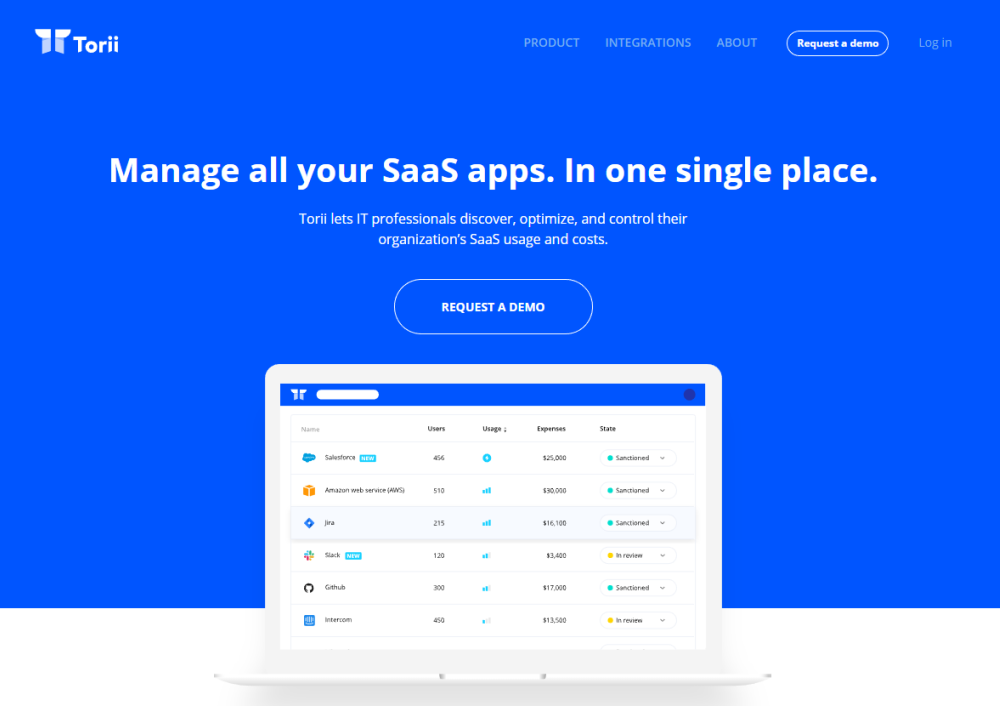Torii Review: Effortless SaaS Management for IT Teams

With the increase in SaaS usage across all kinds of organizations, IT teams often find it difficult to:
- Effectively manage their subscriptions.
- Ensure that no SaaS products are being used which might cause cybersecurity or data privacy compliance problems.
- Keep track of which SaaS apps are actually being used.
- Efficiently provide or revoke various employees’ access to apps.
- Identify which apps offer duplicative functionality and end up being renewed for no reason.
Fortunately, Torii, a powerful SaaS management platform, is designed to help IT managers organize their SaaS resources and better manage their tech stacks from a centralized location.
If you feel overwhelmed by the growing number of SaaS applications in circulation in your organization, know that there is a simple way to monitor app usage, keep track of expenses, minimize risks, and improve your workflows for auditing, reporting, budgeting, access governance and product sanctioning.
In this article, we’ll take a closer look at Torii and how you can use it to better manage your organization’s SaaS ecosystem.
A SaaS Management Platform for Modern IT Teams
Torii is an advanced, standalone SaaS management platform that helps IT managers discover, improve, and control their organization’s SaaS resources through a single dashboard.
It allows organizations that have any number of SaaS applications in their tech stacks to keep track of costs, manage permissions, and get insights into app usage.
Let’s look at some of the app integrations available with Torii:
- Identity Management. You can easily manage all of your applications, control user access, and review third-party software permissions. Supported identity management and single sign-on platforms include Okta, OneLogin, and G Suite.
- Finance: You’ll be able to integrate your accounting and payment software and get a first-hand view about your company’s SaaS expenses, discover opportunities to cut costs, and reveal shadow IT. Torii’s finance integrations include NetSuite, Expensify, and Concur.
- Direct Integrations. You can integrate Torii with apps like Salesforce, Slack, and MailChimp to see how often they’re actually used by your team.
Here are just some of the biggest ways that organizations can benefit from using SaaS management software.
Visibility
Keep an eye on your organization’s SaaS applications and easily manage them from a centralized platform. With Torii, you’re able to uncover information about app usage, number of users, and total expenses in order to discover useful insights and maintain fiscal efficiency with easy-to-understand graphs and reports.
Workflows
A SaaS management tool helps you monitor which new applications were acquired by your employees, as it enables you to make informed decisions about your finances and data risks. Using Torii, much of this process can be automated using custom workflows.
For instance, you can easily identify whether you are paying license fees for two competing software products that perform the same functions. This way, you can discontinue one of the two to save on valuable resources and minimize security risks. Additionally, you’ll be able to find out the user accounts and data access permissions associated with each application.
Automation
You can orchestrate different SaaS management actions to trigger automatically. Torii’s built-in functionality enables you to easily program tasks like renewals, upgrades, downgrades, and revocations.
This can be easily set up by using a combination of triggers with a list of corresponding actions.
5 Powerful SaaS Management Features on Offer With Torii
Torii is SaaS management software that compiles your organization’s entire tech stack into a simple dashboard that gives you insights, helps you automate workflows, generates reports, makes it easy to manage users, and lets you keep track of expenses.
Here are some of the key features that Torii offers to make this possible.
1. Insights
One of the main goals of Torii is to help IT managers make sure they don’t spend too much on SaaS applications.
Its Insights page gives you a complete overview of your organization’s software ecosystem at a glance. From here, you’re able to find out more information like the total number of users, programs installed, and expenditures over the past 12 months – all from one screen.
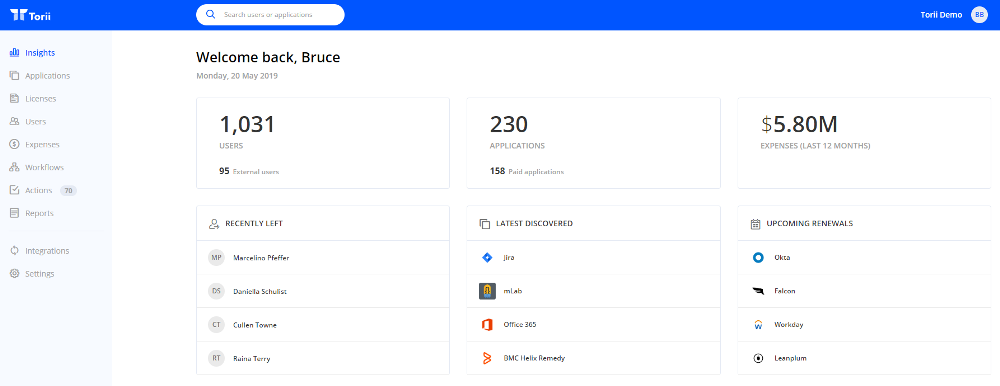
You can dig deeper to reveal even more technical details about your organization’s SaaS usage and spend.
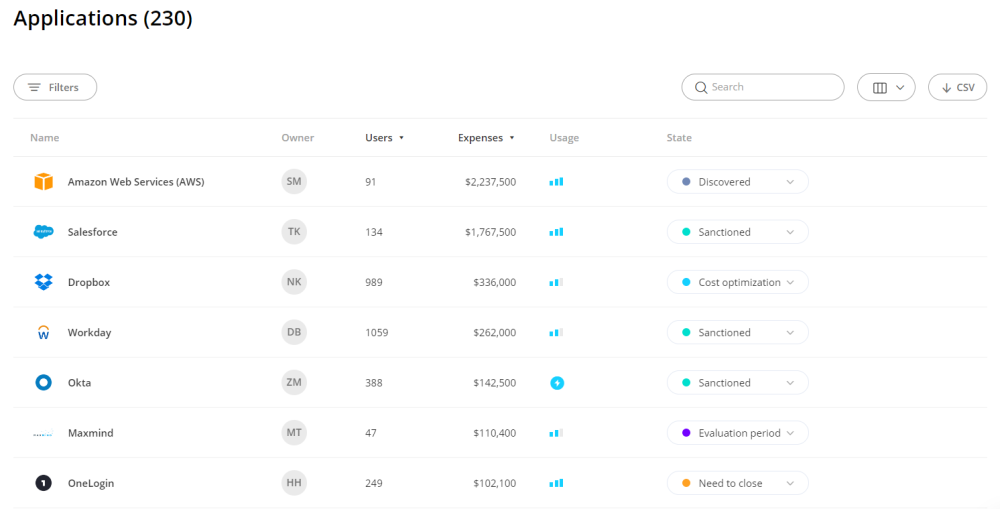
From the Usage column, you can find out how many times a particular software was used over the past month and determine which applications are essential to your organization and which ones aren’t being used.

You can also get access to additional information about each SaaS tool you’re using. For instance the number of users, total expenses, license renewal date, and total cost.
Finally, Torii helps users identify the app’s in-house “owner” (i.e. the person from your company who initiated the software license purchase), which allows IT managers to have someone to turn to when deciding whether to renew licenses or cancel subscriptions.
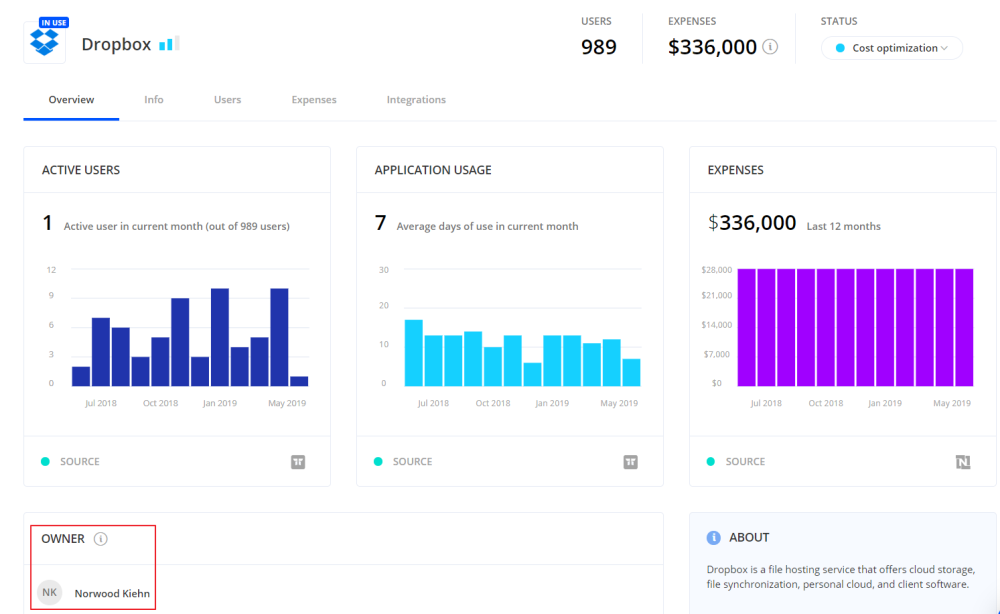
2. Workflows
Another standout feature on offer with Torii is that it helps IT managers streamline (and automate) important workflows. For example, you can use Torii to discover new apps in your organization’s tech stack and assign it a status as soon as an employee subscribes.
Setting a status sends a notification to the app’s owner who is then prompted to fill out a form to get approval from the IT department. This way, you can make sure each app always has an appropriate status – for instance, In review, Evaluation period, Need to close or Sanctioned.
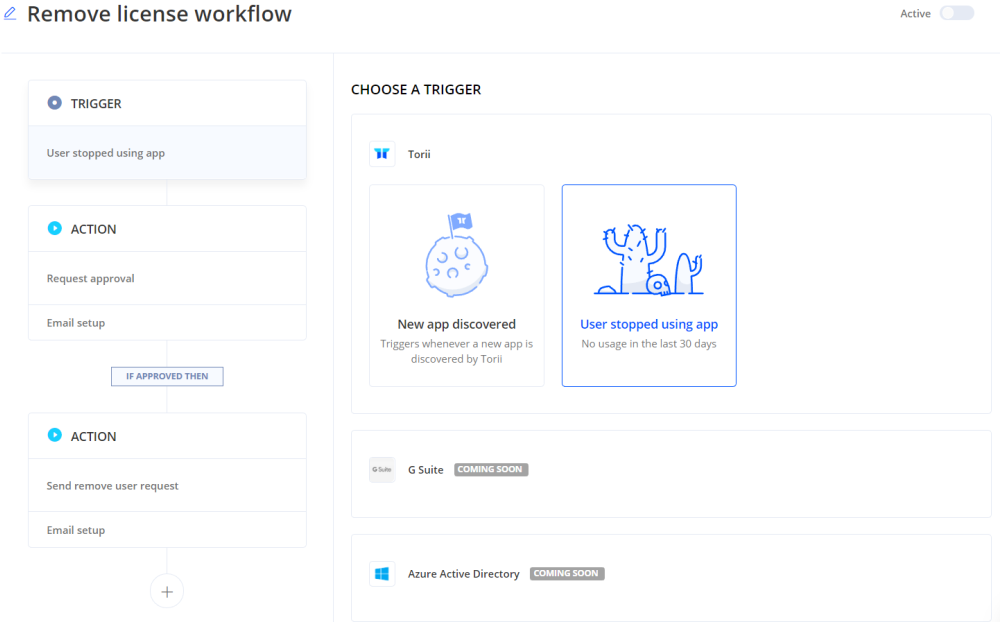
It’s always easier to evaluate apps before they’re installed and in use. Being proactive also helps you avoid common legal and security risks such as GDPR non-compliance and malware attacks. Plus, you’ll be able to reduce spending on unnecessary or duplicative SaaS applications.
You can use Torii’s built-in triggers and actions to create all kinds of workflows. For example, you might consider automating app onboarding and offboarding processes. An app onboarding workflow would trigger whenever an app is added to the organization’s tech stack. It might execute a series of actions such as assigning user accounts. Similarly, an offboarding workflow might revoke user access to tools they haven’t used in the past month – or to revoke their access to all apps, in situations where someone leaves the company.
3. Reports
Torii makes it easy for IT managers to make informed decisions by giving them access to risk analysis and expense reports. These allow you to fully understand your organization’s software usage, data exposure and expenditures.
There are two basic types of reports you can generate with Torii:
- Risk Analysis. There are thousands of SaaS solutions available in the market which can potentially bring numerous cybersecurity, management, and compliance issues to the table. Torii’s Risk Analysis report allows you to minimize these threats by reviewing risk levels to third-party software based on their authorizations. So, whether you’re using tens, hundreds, or thousands of apps, you’ll have a good idea about what sorts of permissions each one requires.

- Expense Analysis. Torii’s Expense Analysis report enables IT managers to find out how much is being spent on each application in the SaaS stack. This way, when it comes time to audit SaaS applications, you’ll have a better idea of which ones are in use, which might be redundant and which ones can be unsubscribed from.
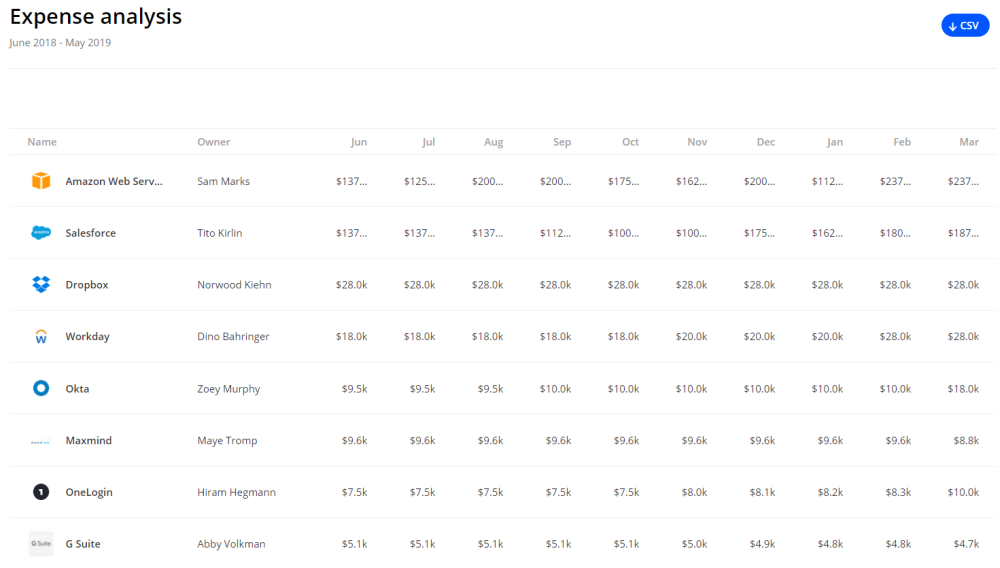
4. Users
In most organizations, it’s fairly common for different users to have access to differing combinations of SaaS applications. Torii allows you to monitor and control app ownership and access. For example, in order to find out the owner of a particular app, all you have to do is look at the icons under the Owner of column.

You can either ask an app’s owner to voluntarily withdraw or you can revoke their access using the 1-click user offboarding workflow. Additionally, you’ll also be able to view all users – including current, past, and external ones.
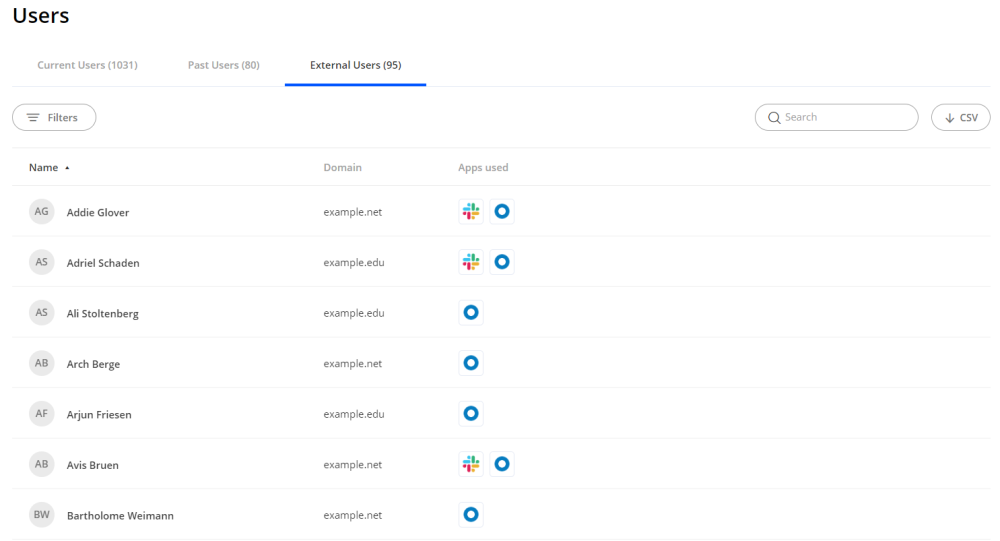
This information helps IT managers quickly identify the in-house app owner responsible for all the decisions and activities related to the application’s usage.
5. Expenses
Torii’s Expenses page provides detailed information about your organization’s SaaS expenditure.
Paired with bookkeeping (like Expensify) and ERP (like NetSuite) tools, Torii can quickly reveal your organization’s SaaS expenses. Torii finds and analyzes invoices, transactions, and credit card statements through API integrations to determine how much you’ve spent on SaaS licenses and subscriptions.
You can use the expense analysis report to find out exactly how much you spend on each application per month per user. Additionally, you can also get a general, up-to-date overview of your monthly SaaS budget from the Expenses page.

If your organization doesn’t use these types of finance tools, then you can upload invoice and transaction details manually. Torii will then be able to read and match the costs in the file to the SaaS software and create the expenses report accordingly.
Torii automatically generates graphs that allow you to track SaaS expenses over the past year and shows you which months had an unusual rise in application costs. Additionally, you’ll also be able to identify the reasons behind those anomalies as well as pinpoint the apps responsible for the spike in costs.

You can reveal minute details about your app expenditures using Torii’s Trend feature. This gives you information about how much each software costs over time. It’s outputted as a line chart that enables you to quickly identify apps that are becoming expensive.
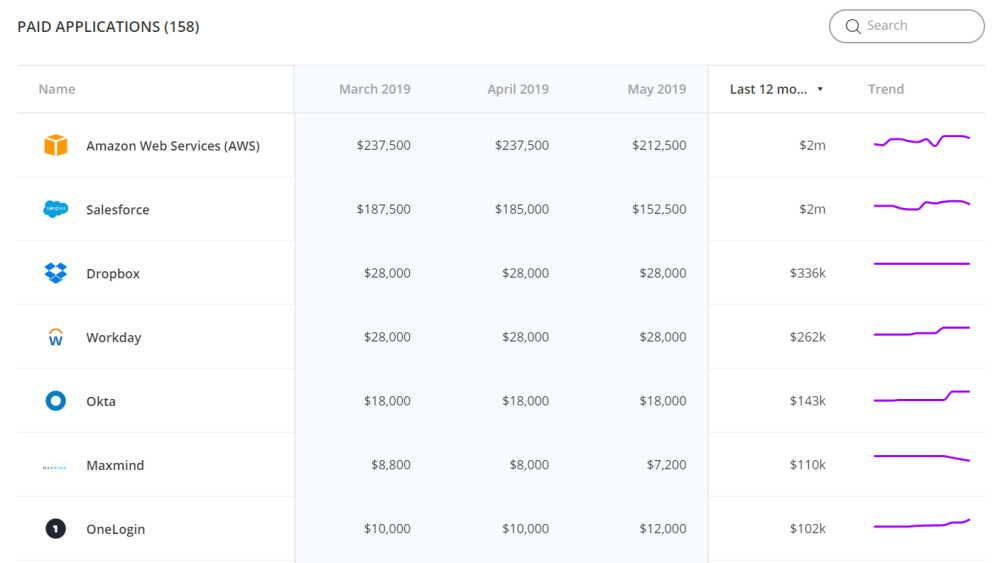
Conclusion
SaaS management solutions like Torii can help your organization meet challenges related to software infrastructure head-on.
More specifically, you’ll be able to discover helpful insights about different applications and take the necessary steps to optimize your costs. It’ll also give you complete control over your app permissions, usage status, and enable you to make informed decisions in a timely manner.
What are some of the biggest problems you have with managing your organization’s tech stack? Let us know by commenting below.
